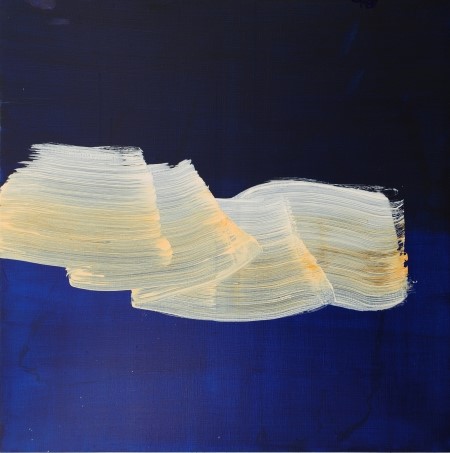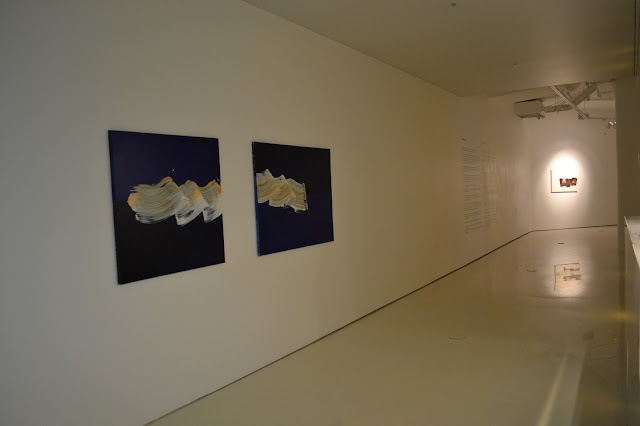Art of Tansaekhwa
Park Daa Won

Art of Tansaekhwa
Now Here In Blue /PARK DAAWON
PARK DAA WON was born in Daegu in 1957 and studied painting at the College of Design and Art, Yeungnam University. Park is a petite woman with a gorgeous girly smile. In contrast to her feminine physical appearance, her work is intriguingly masculine. The masculinity of her recent body of work such as Now Here In Blue” and “Now Here-Becoming” series is manifested in the boldness, dynamics, vigour and energy which are expressed by her confident brushwork, as well as the carefully staged tensions between the painted image and empty spaces and the mobile and static. This masculinity is perhaps derived from her aesthetic foundation largely shaped through her early childhood exposure to the Korean literati painting (‘Muninhwa’ in Korean and ‘Wenrenzhihua’ in Chinese), which was traditionally predominately practiced by men, especially scholar-gentlemen during the Joseon Dynasty (1392-1910).
Art of Tansaekhwa
Now Here- Becoming / PARK DAA WON
Now Here- Becoming / PARK DAA WON
Art of Tansaekhwa
Now Here- Becoming / PARK DAA WON
Now Here- Becoming / PARK DAA WON
Art of Tansaekhwa
Now Here- Becoming / PARK DAA WON
Now Here- Becoming / PARK DAA WON
Art of Tansaekhwa
Now Here- / PARK DAA WON
Growing up with a mother who ran a gallery, Park was extremely fortunate to see the original works of the last eminent Joseon literati masters like Byeong O Seo (1862-1935) at very early age. In her first year at university, she had also a rare chance to see the original painting of “A Wintry Scene” (Sehando) is held in a private collection. Wintry Scene is one of the best known works by by Jeong Hui Kim (1786-1857), who was a powerful scholar-official, an influential art critic and connoisseur, an acclaimed calligrapher and importantly, the most prominent literati painter of the late Joseon period. Kim painted this piece during his exile (1840-1848) on Cheju Island. The deliberately sketchy wintry scene, thereby creating an austere atmosphere, is designed to express the artist’s lonely inner self and his integrity. Park’s “Now Here In Blue” and “Now Here-Becoming” series, despite of their contemporary medium and idioms, are connected to the essence of the Korean literati tradition exemplified by Kim.
Art of Tansaekhwa
Now Here- Becoming / PARK DAA WON
Now Here- Becoming / PARK DAA WON
To arrive at this state, Park has refined necessary skills and techniques. Her seemingly spontaneous and ‘natural’ brushwork is in fact a result of numerous rehearsals of swiftly making an image without drawing over the same line twice. Before the performance of painting she meditates, and thus she has a clear vision of the images she is about to create. Through this diligent practise regime, she has achieved a fine balance between the opposition of control and freedom or dynamism opposition of control and freedom or dynamism in the “Now Here In Blue” and “Now Here-Becoming” series.
















































